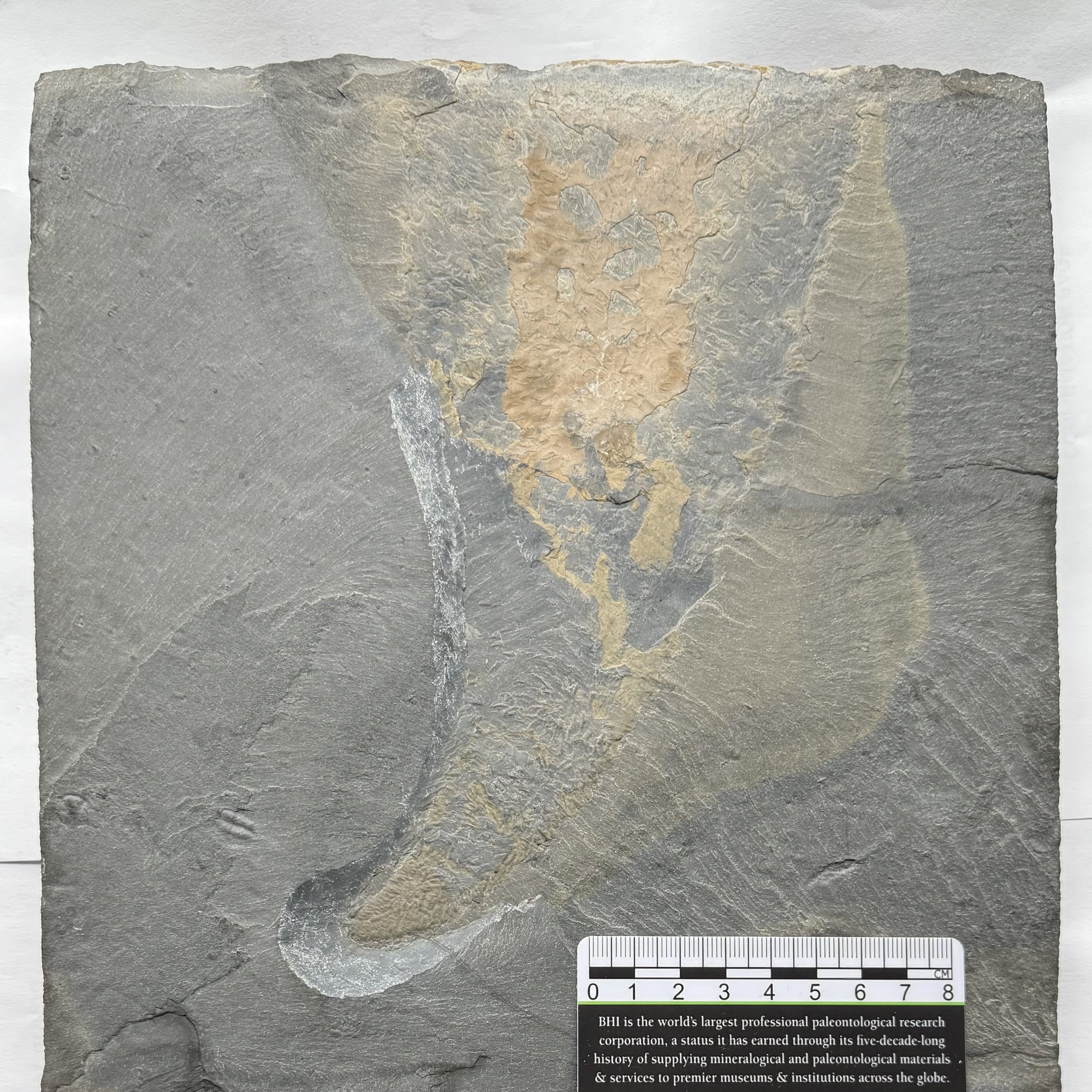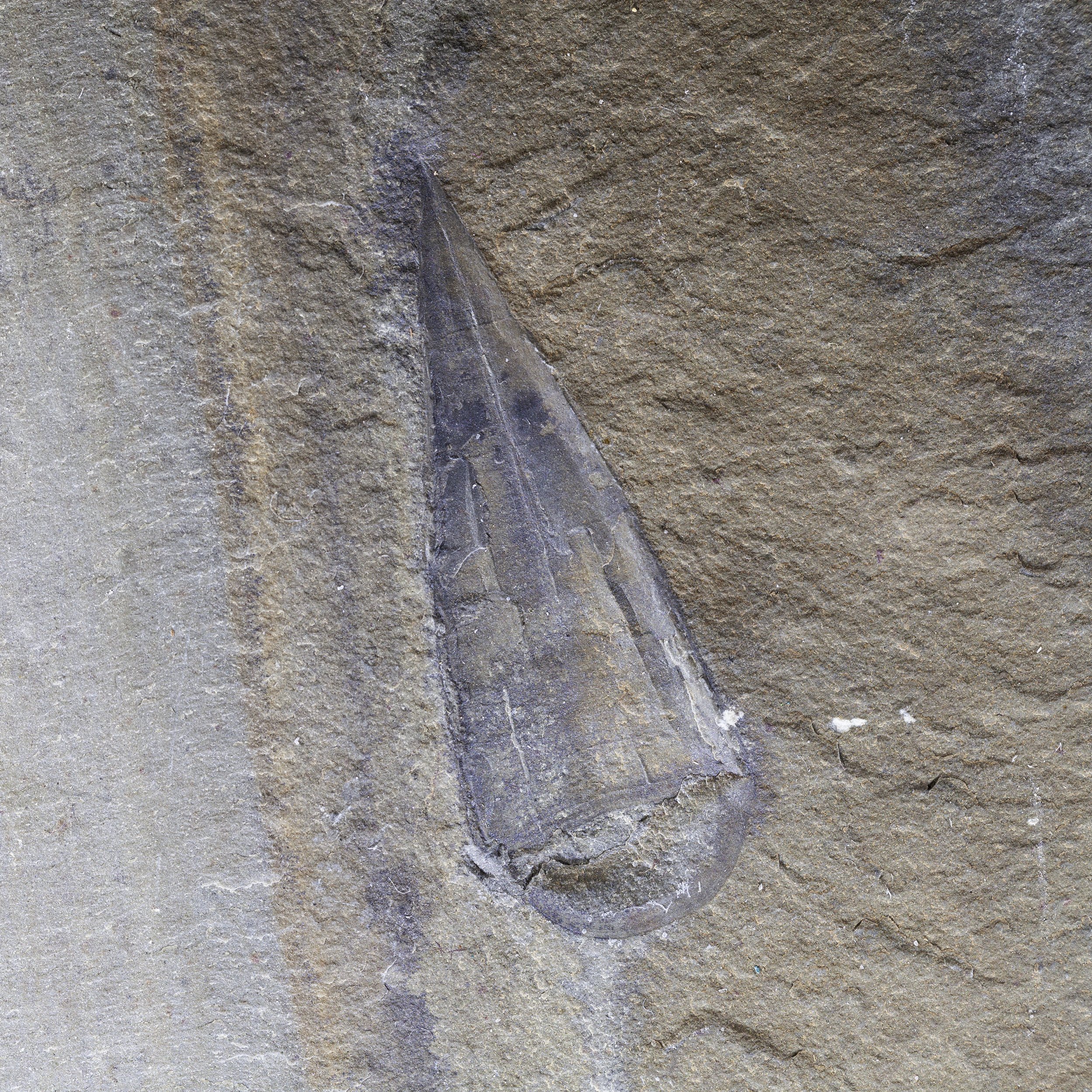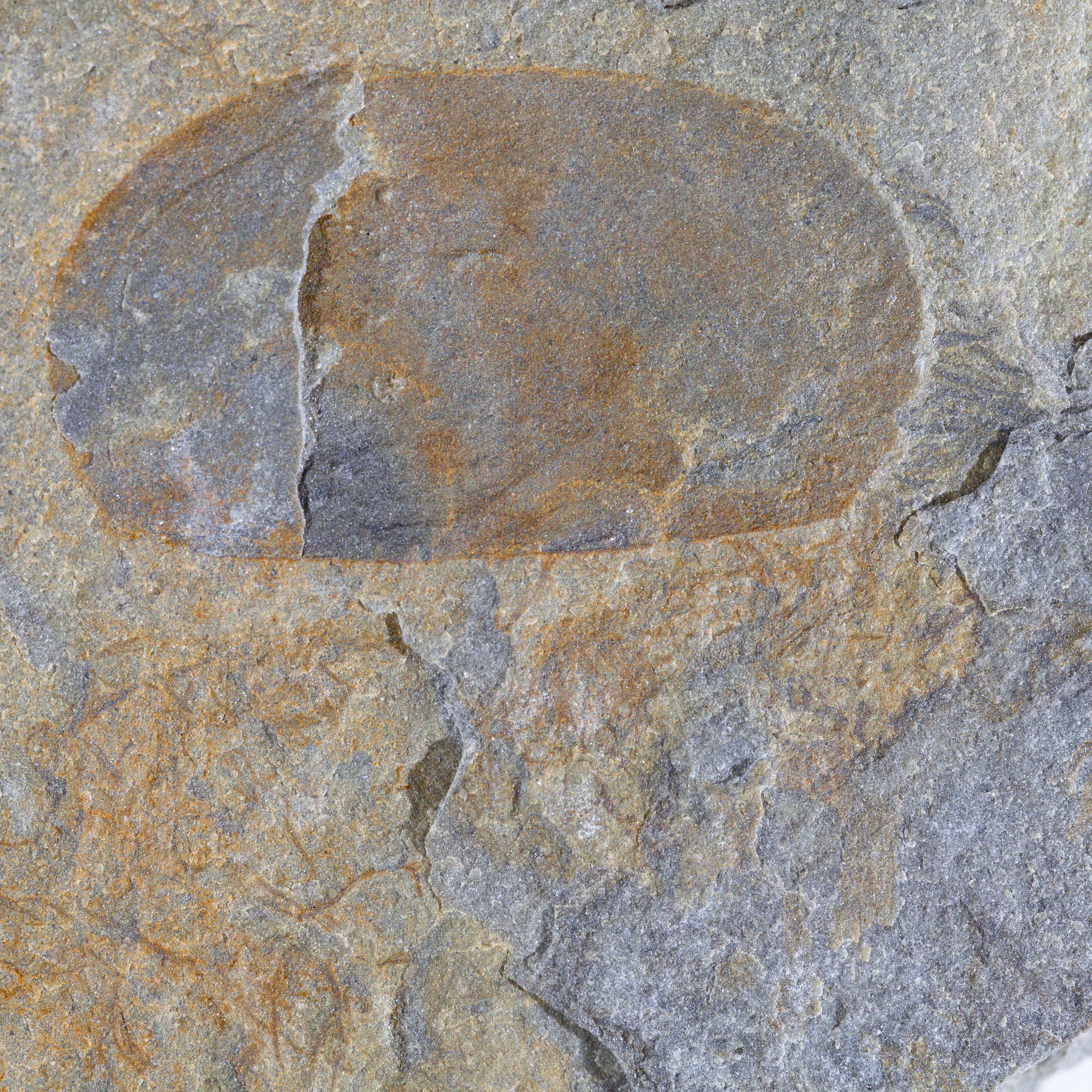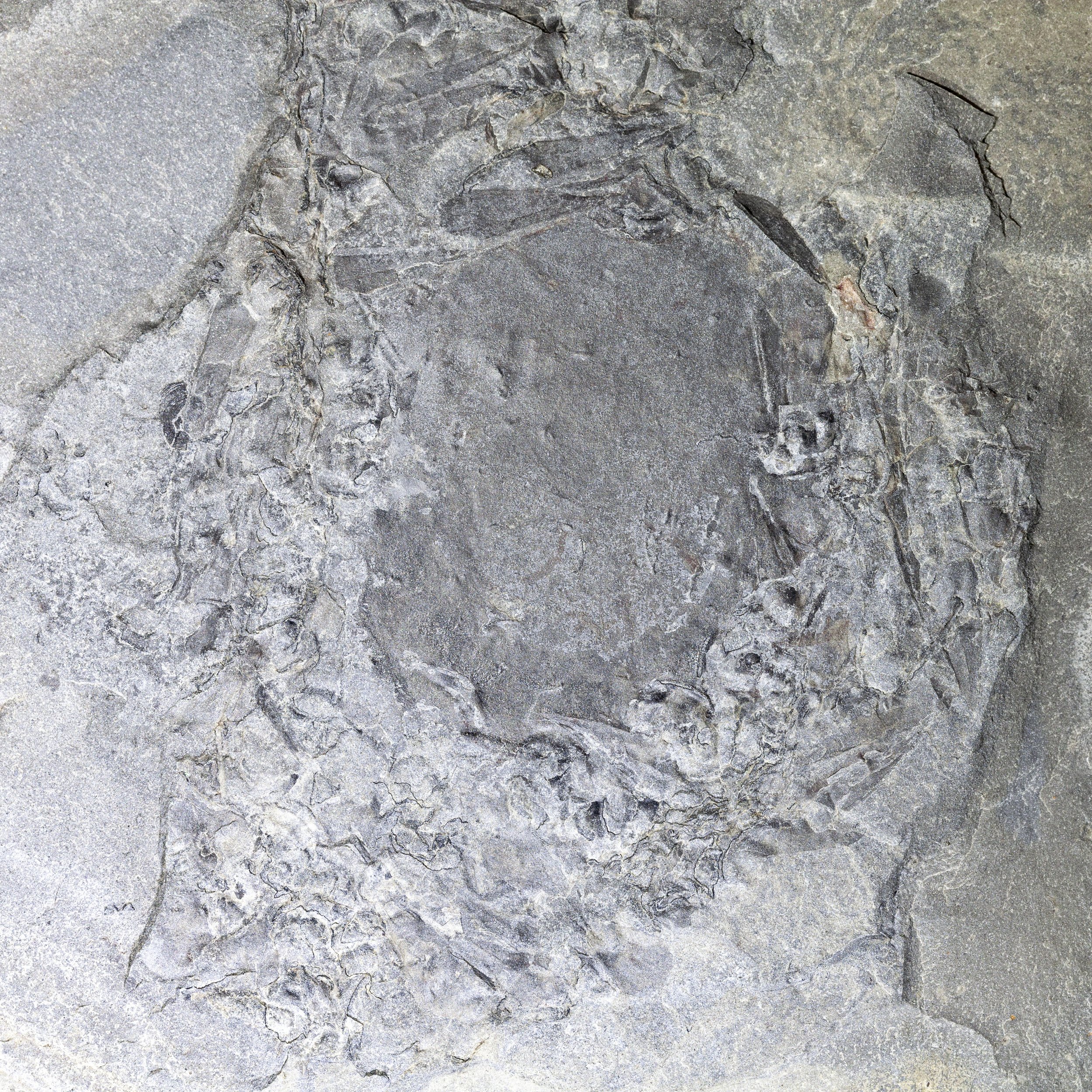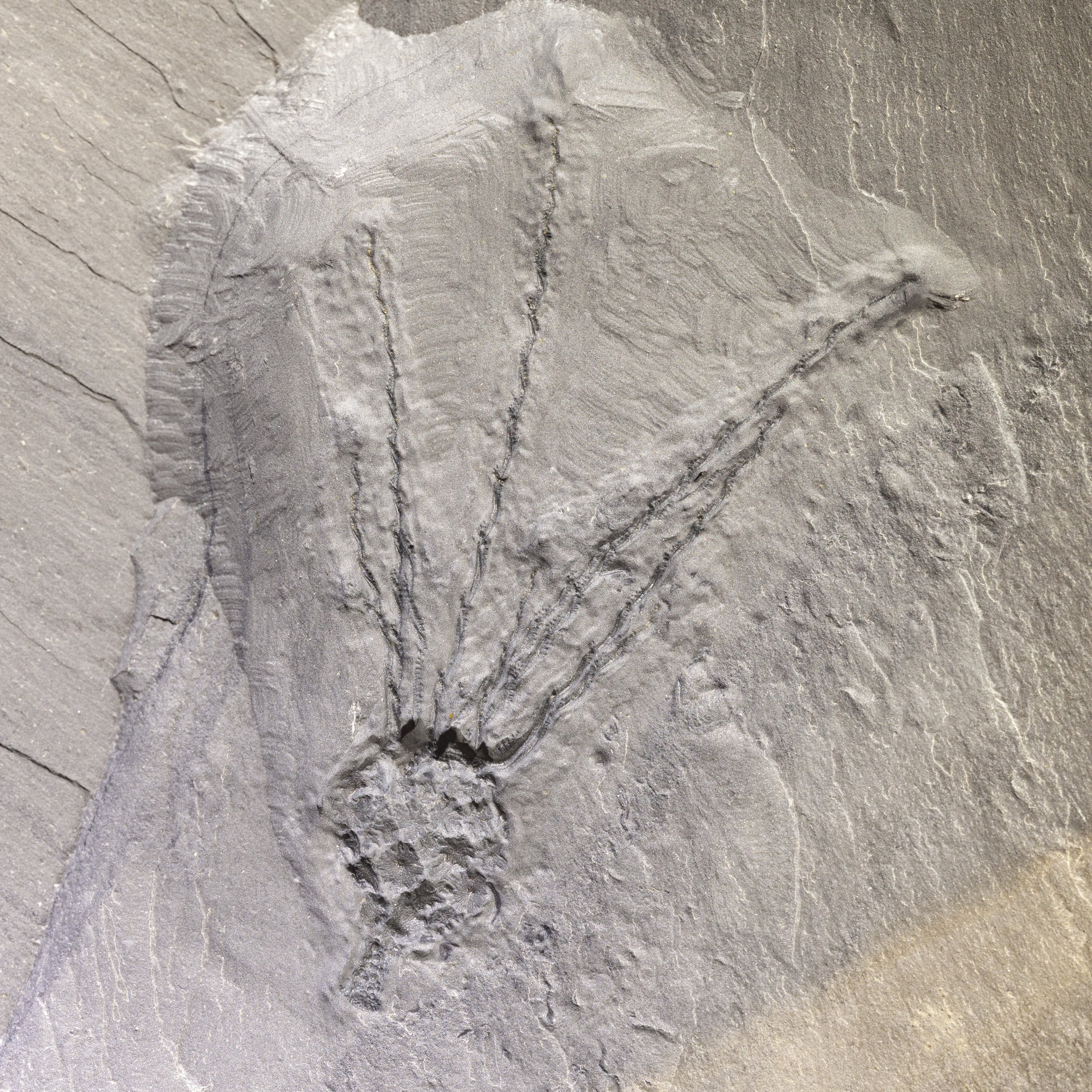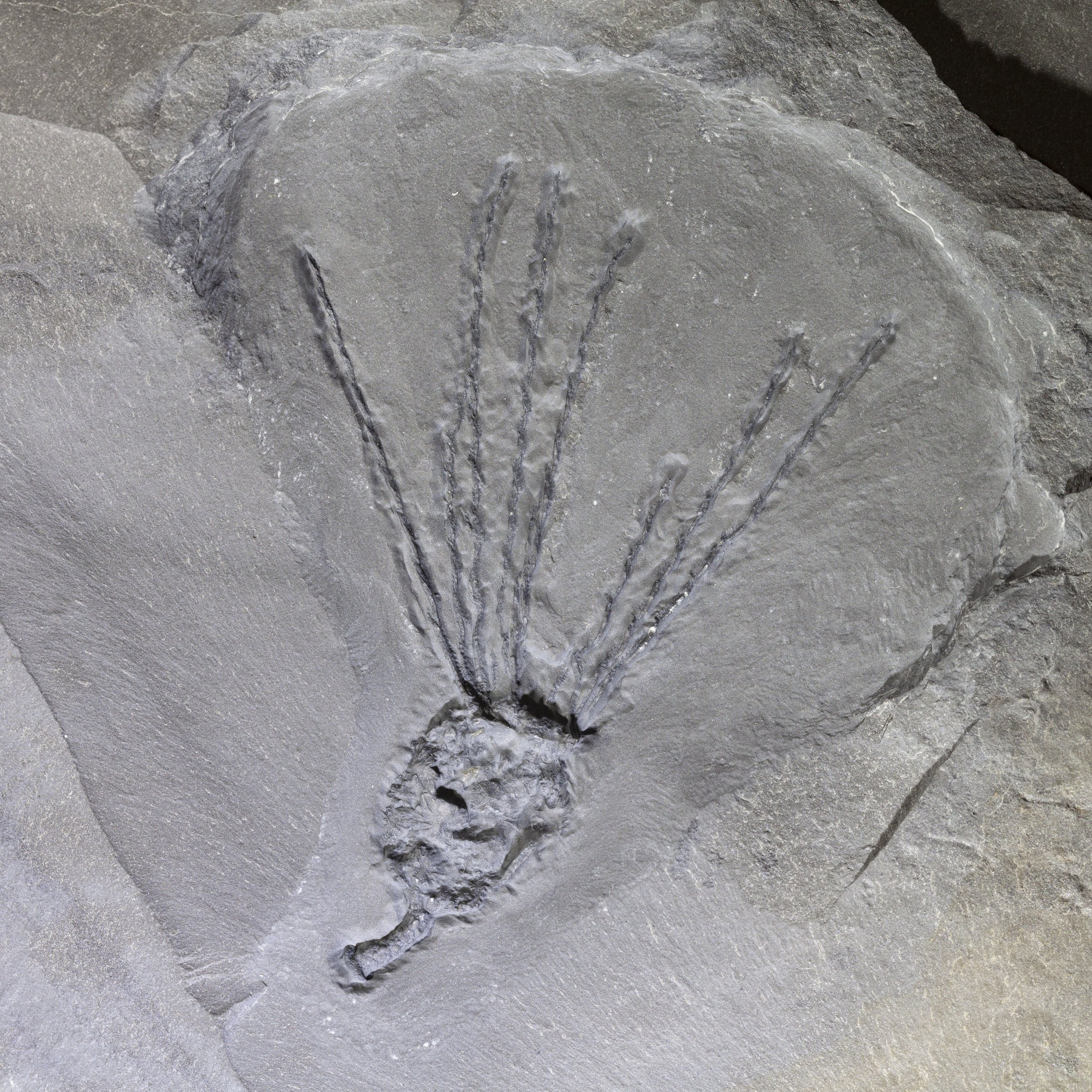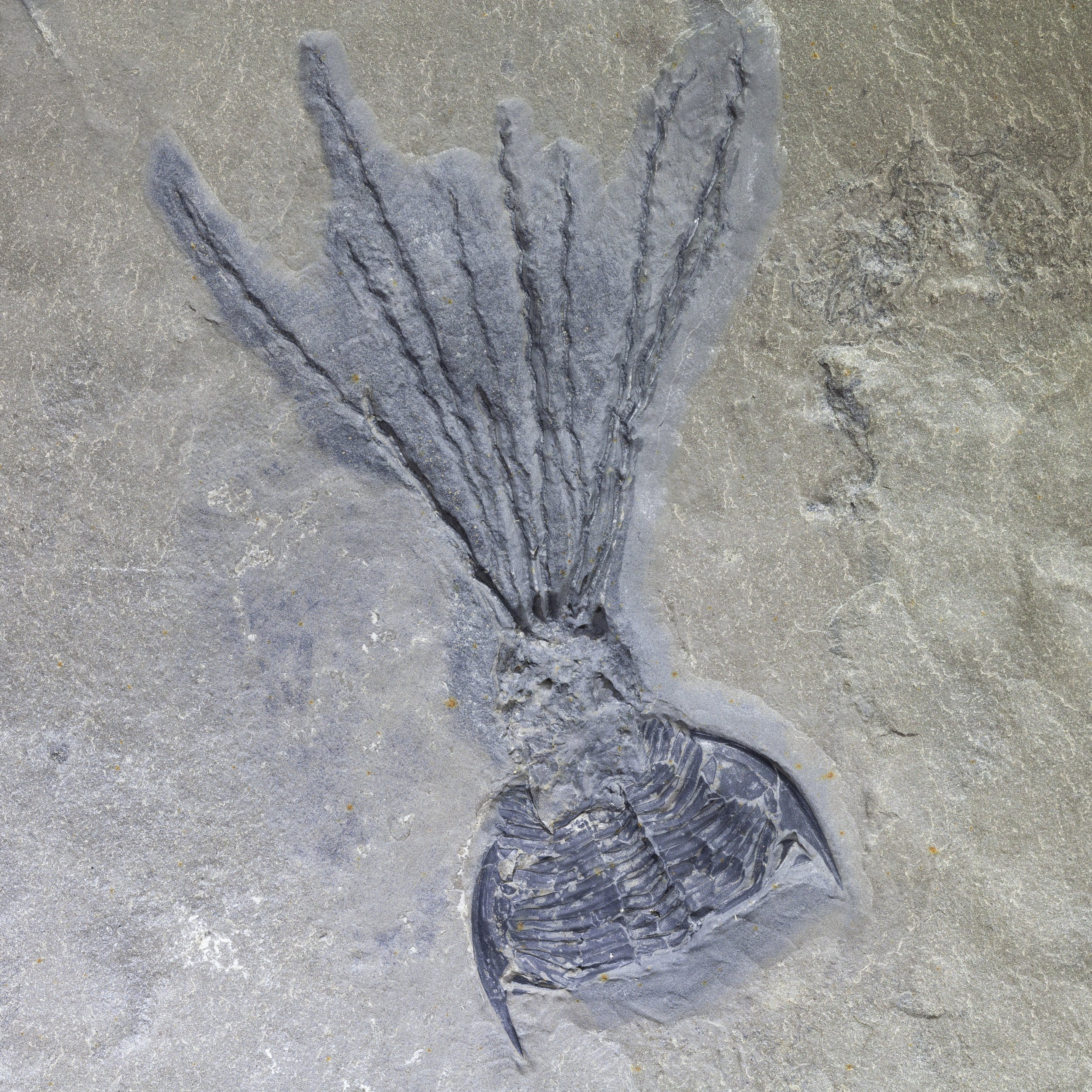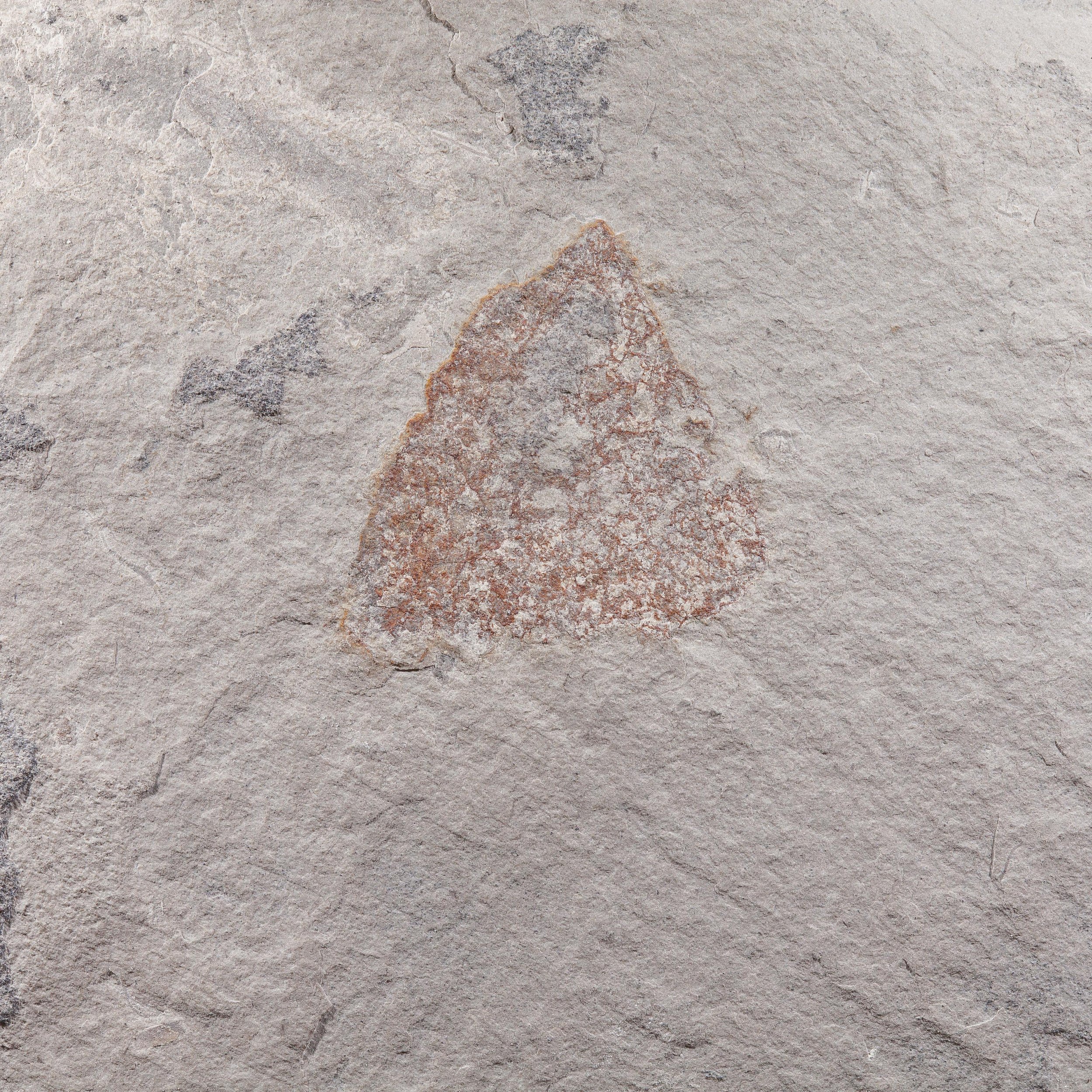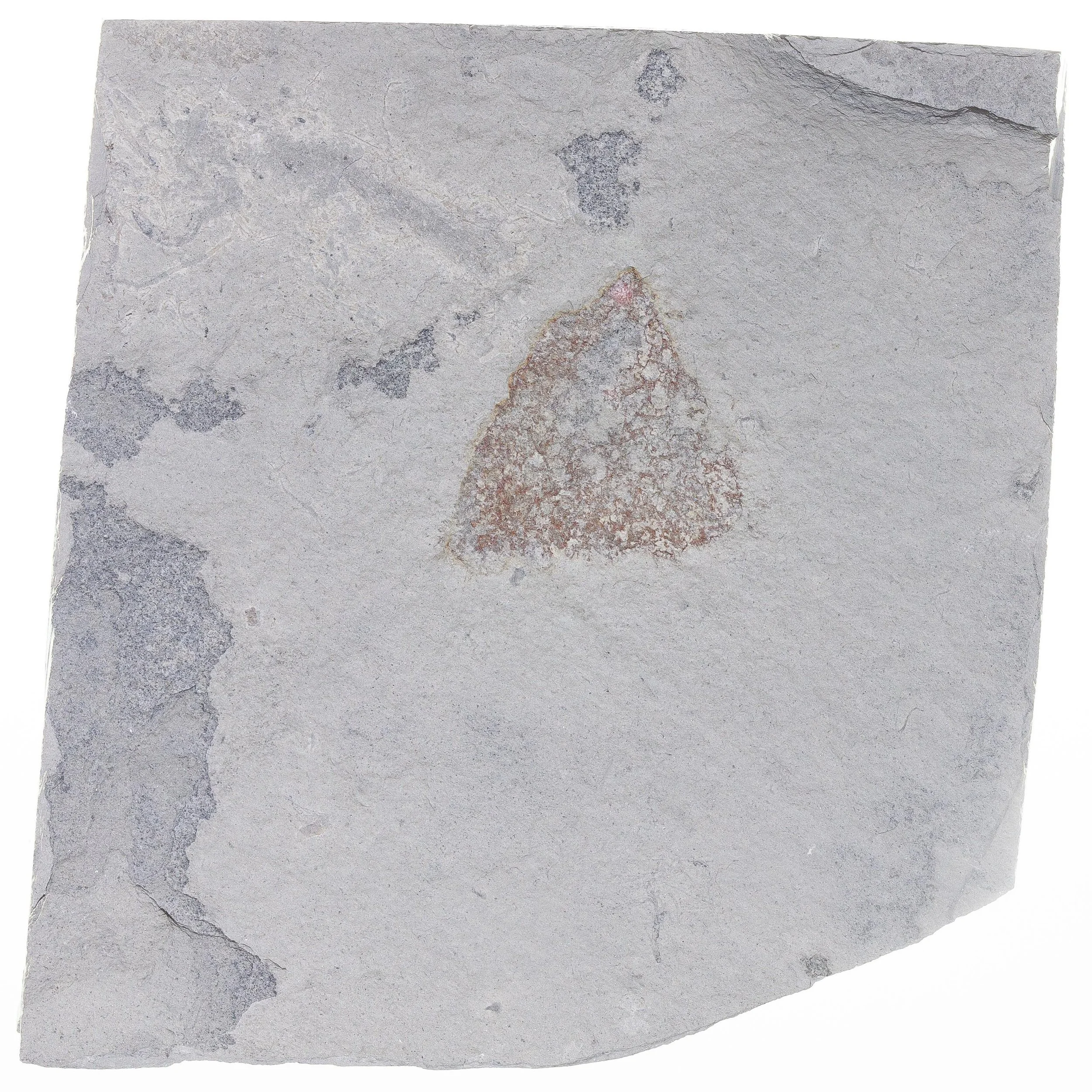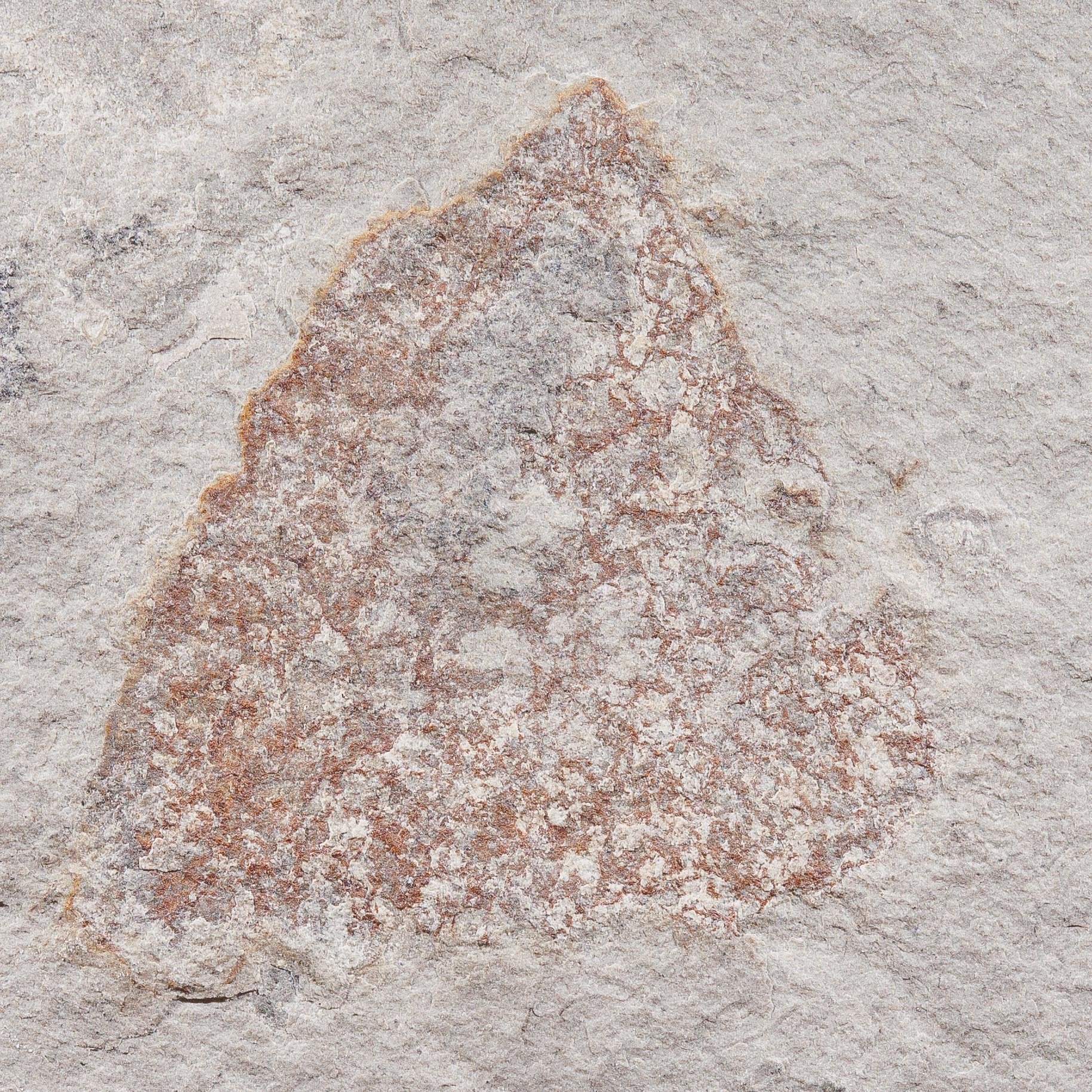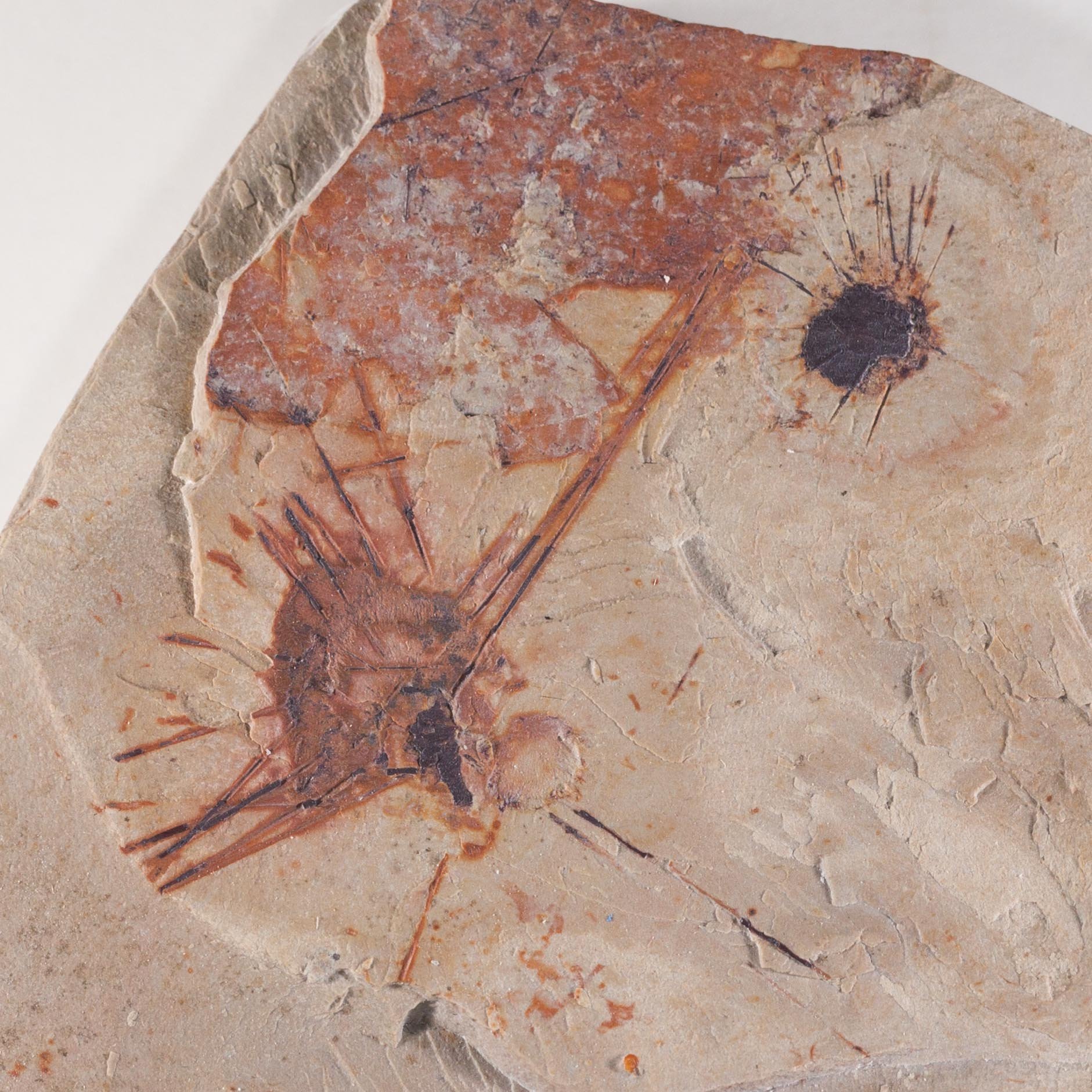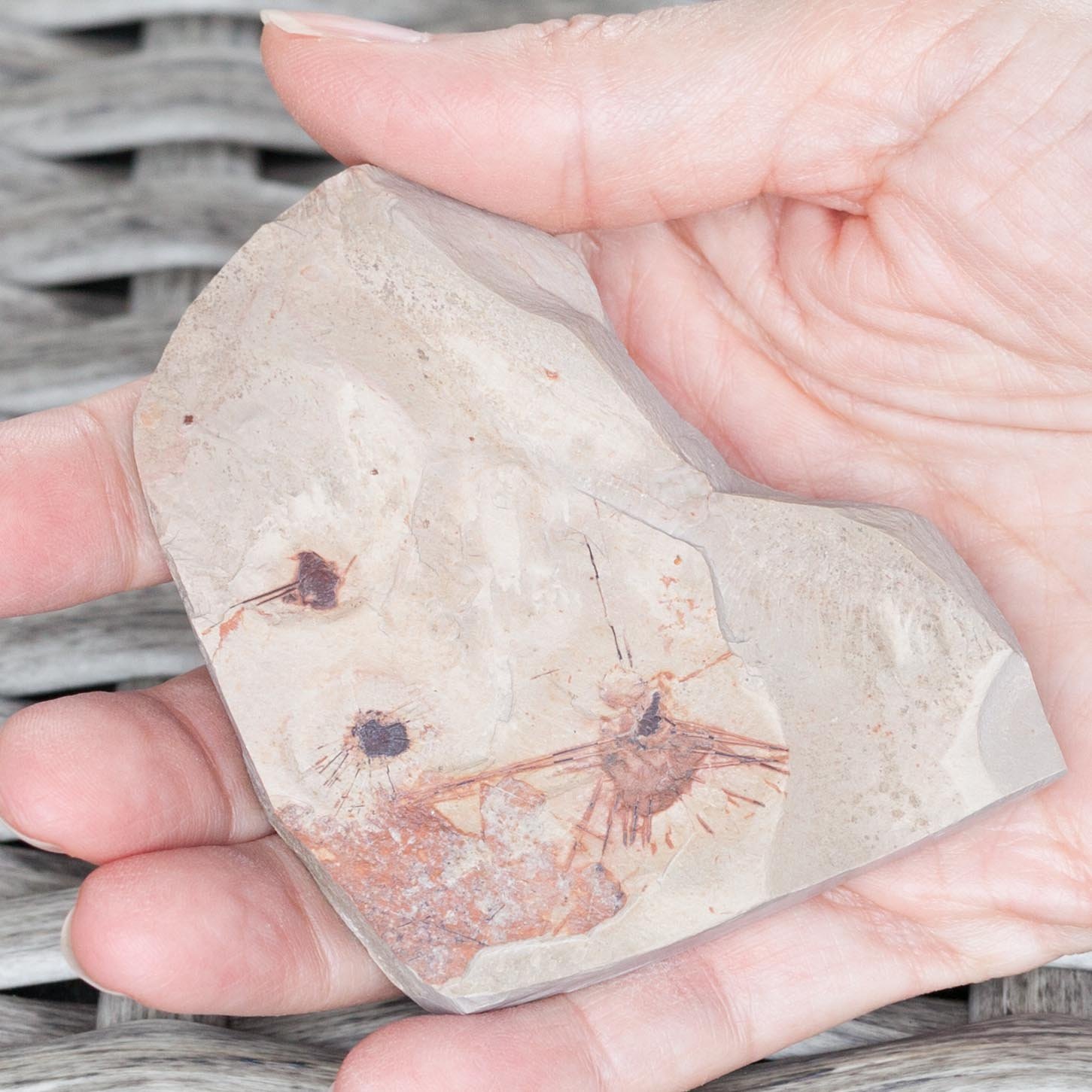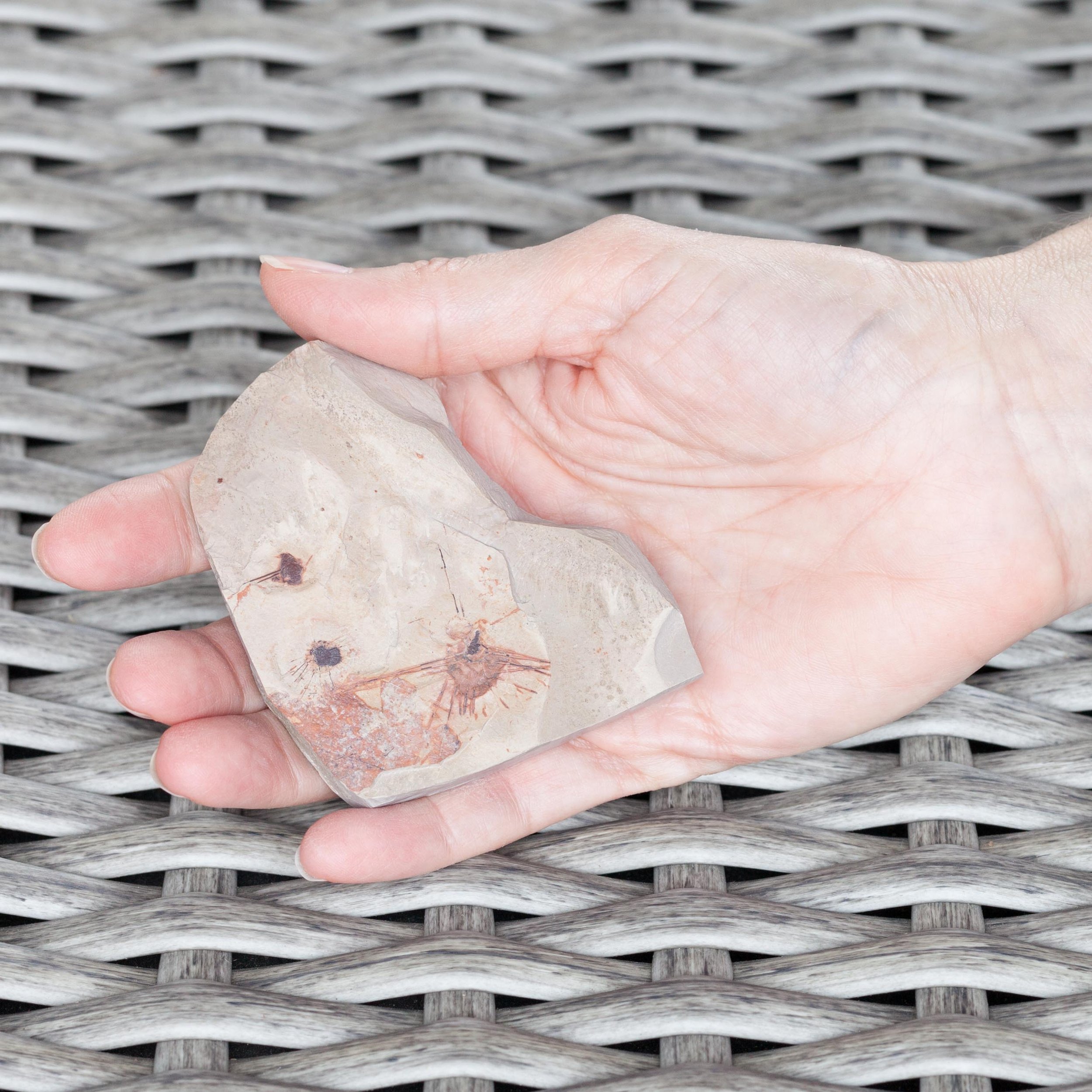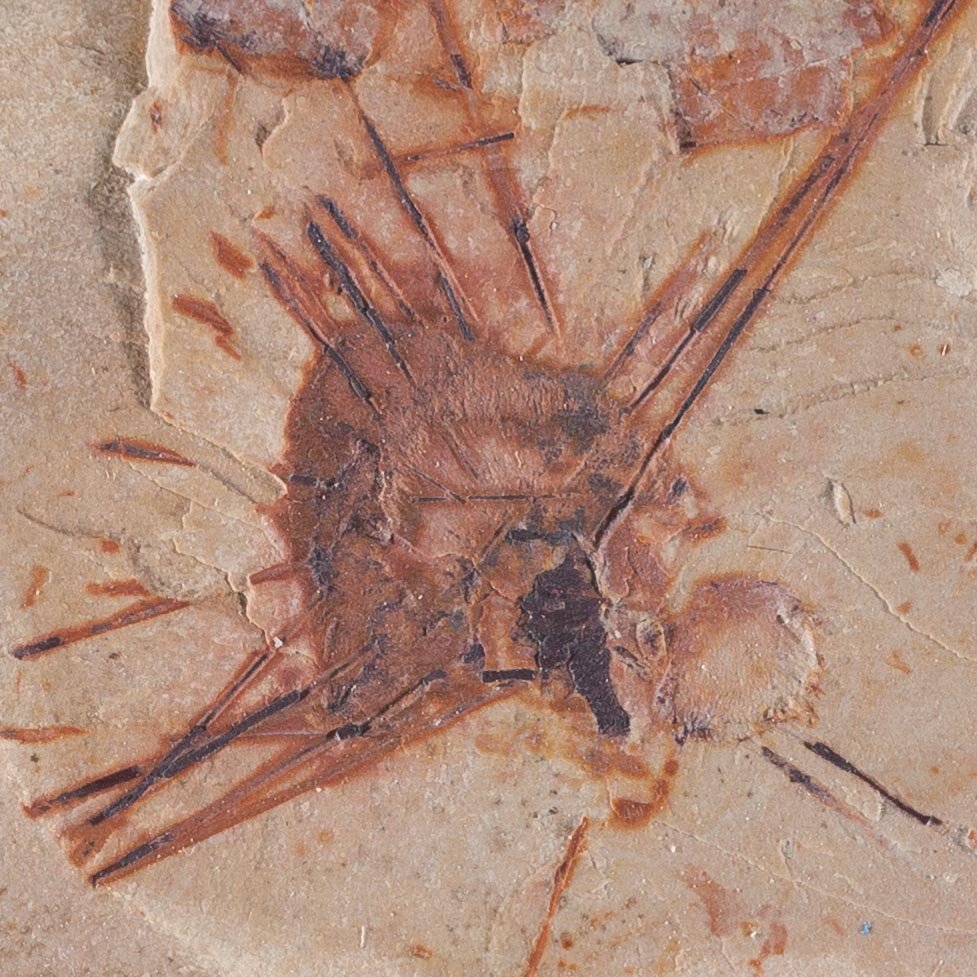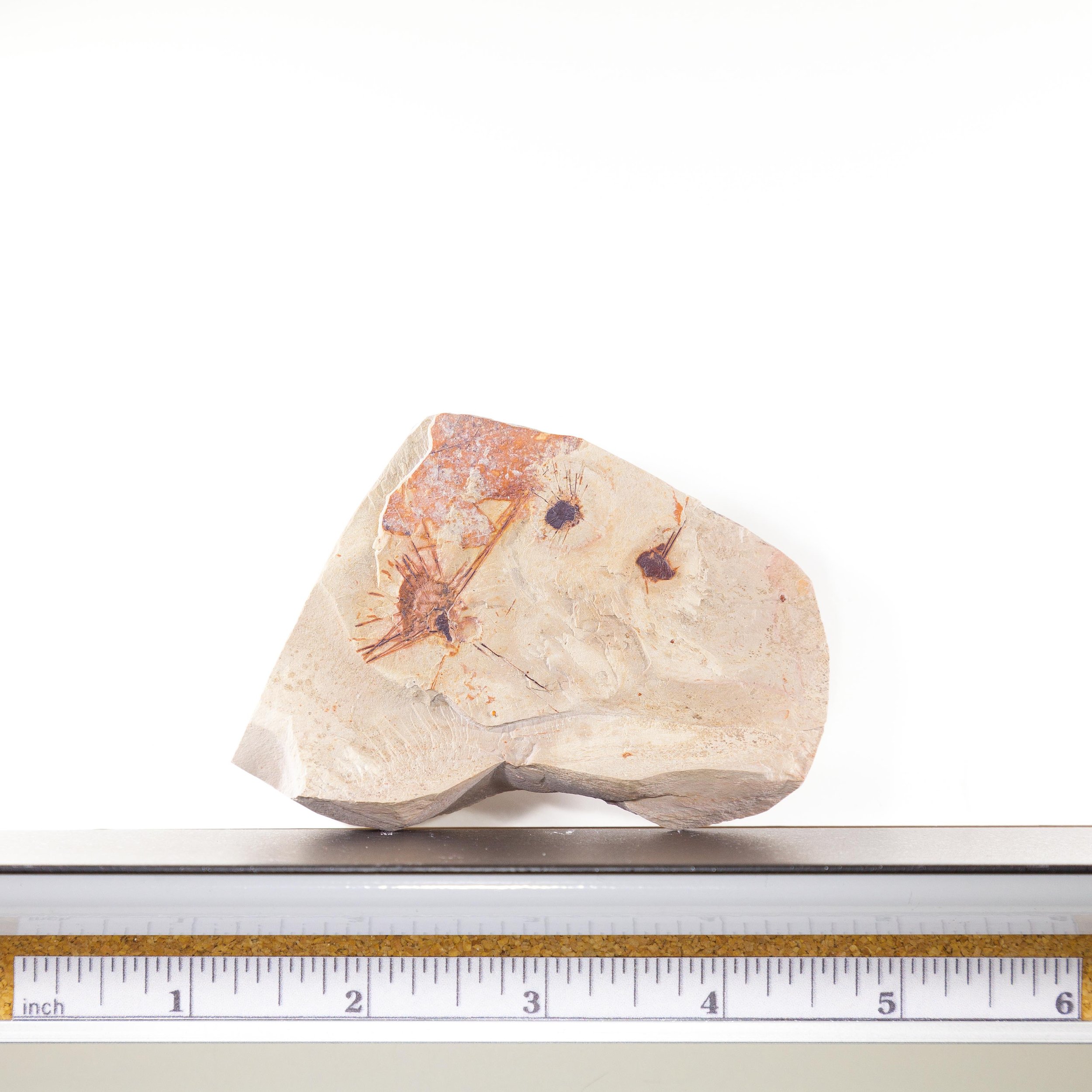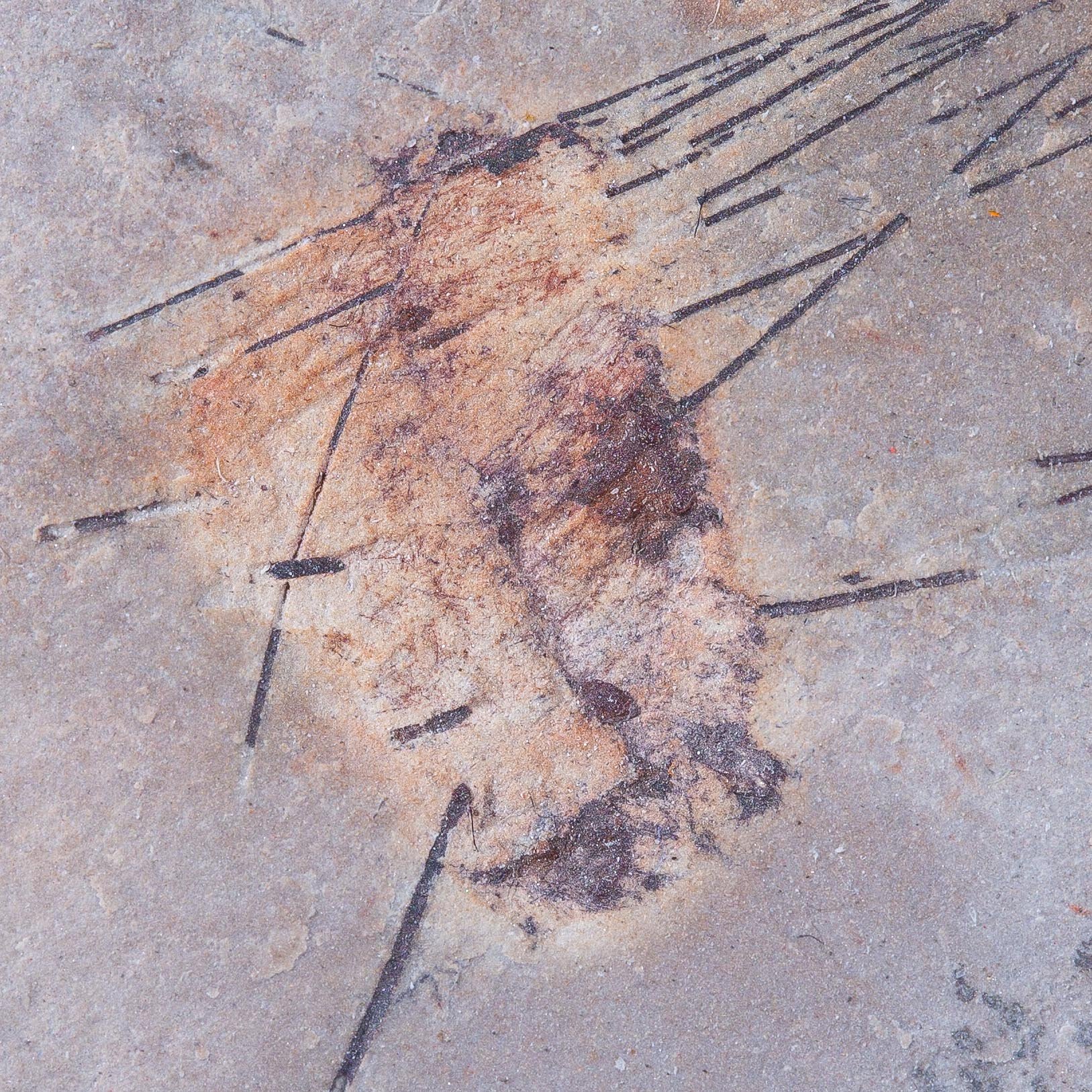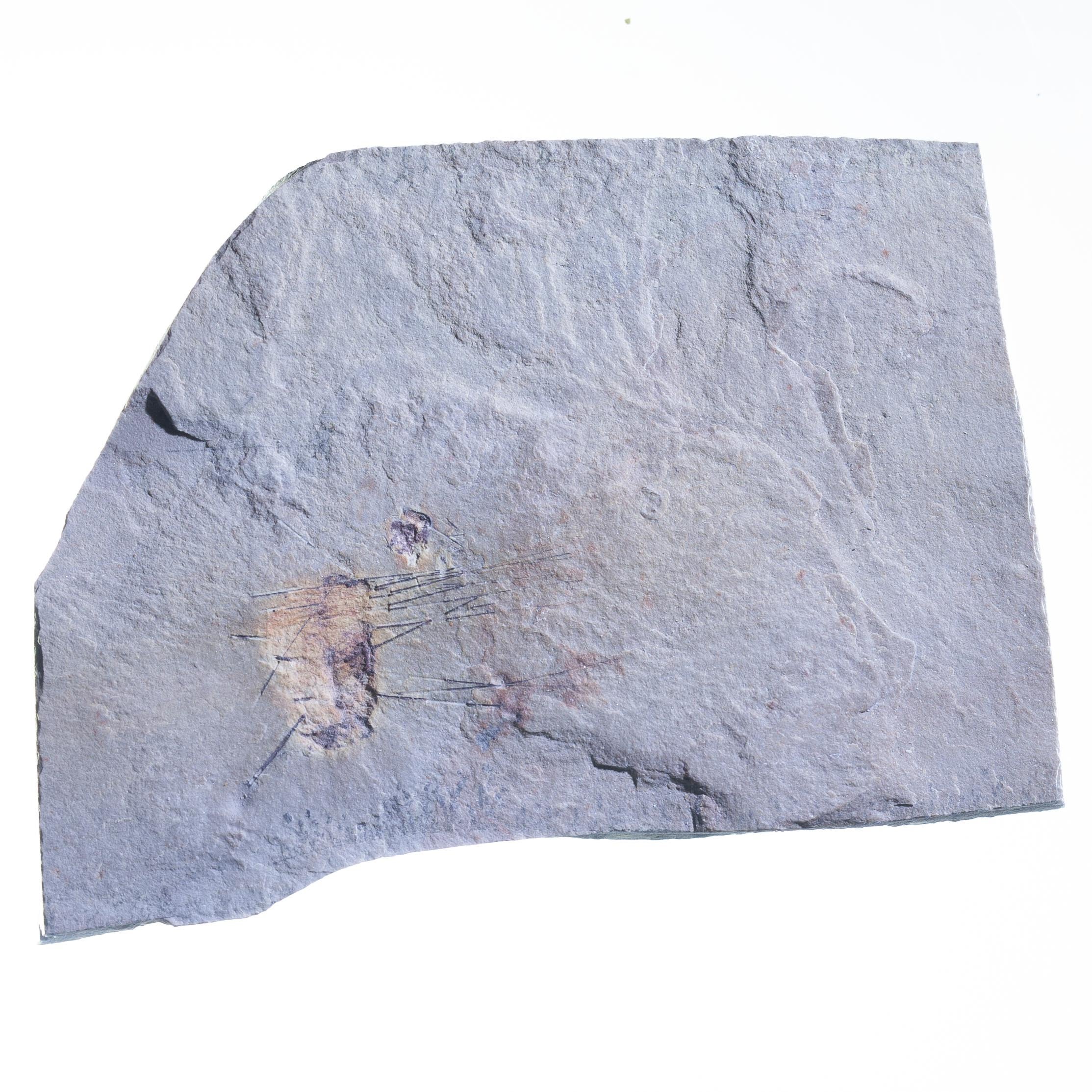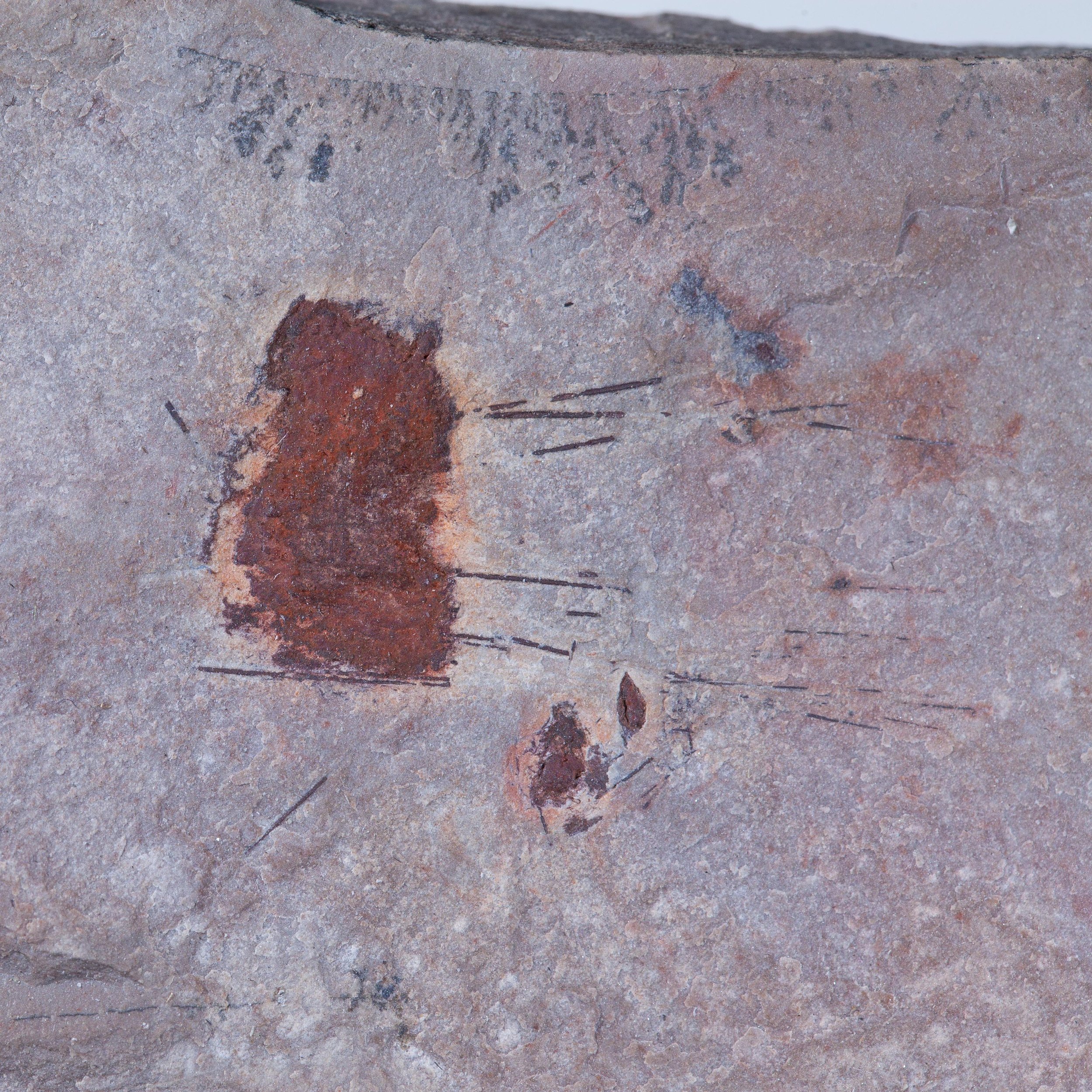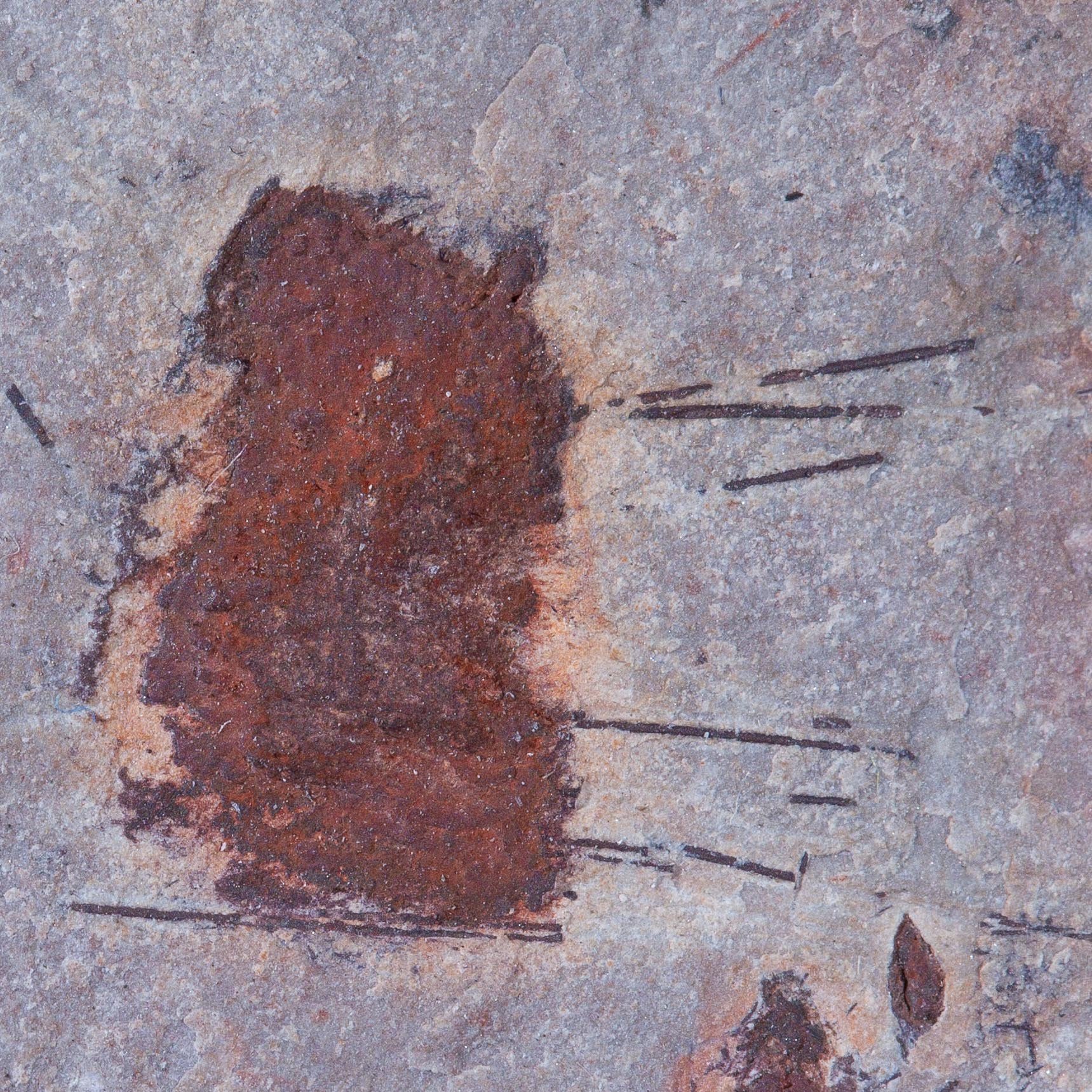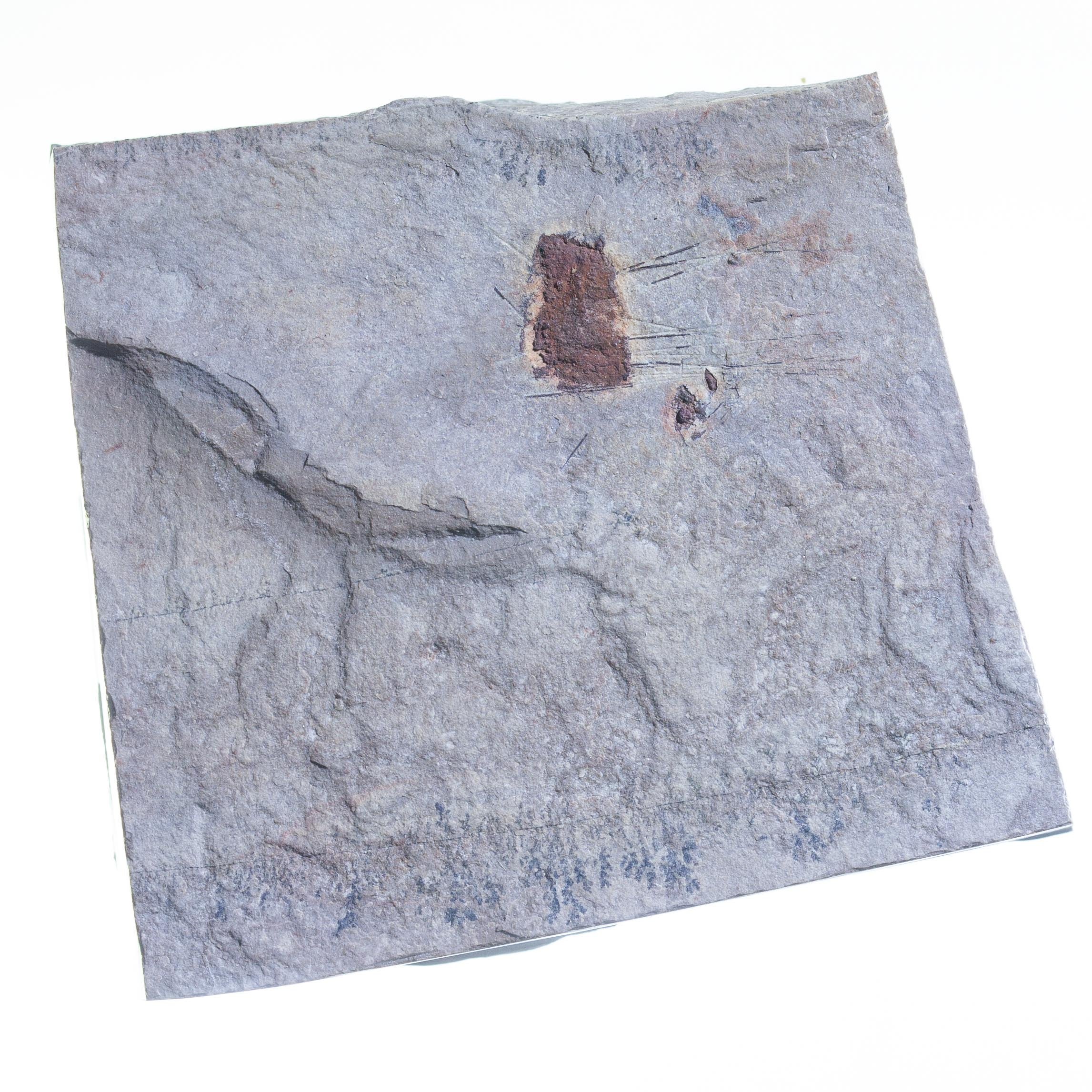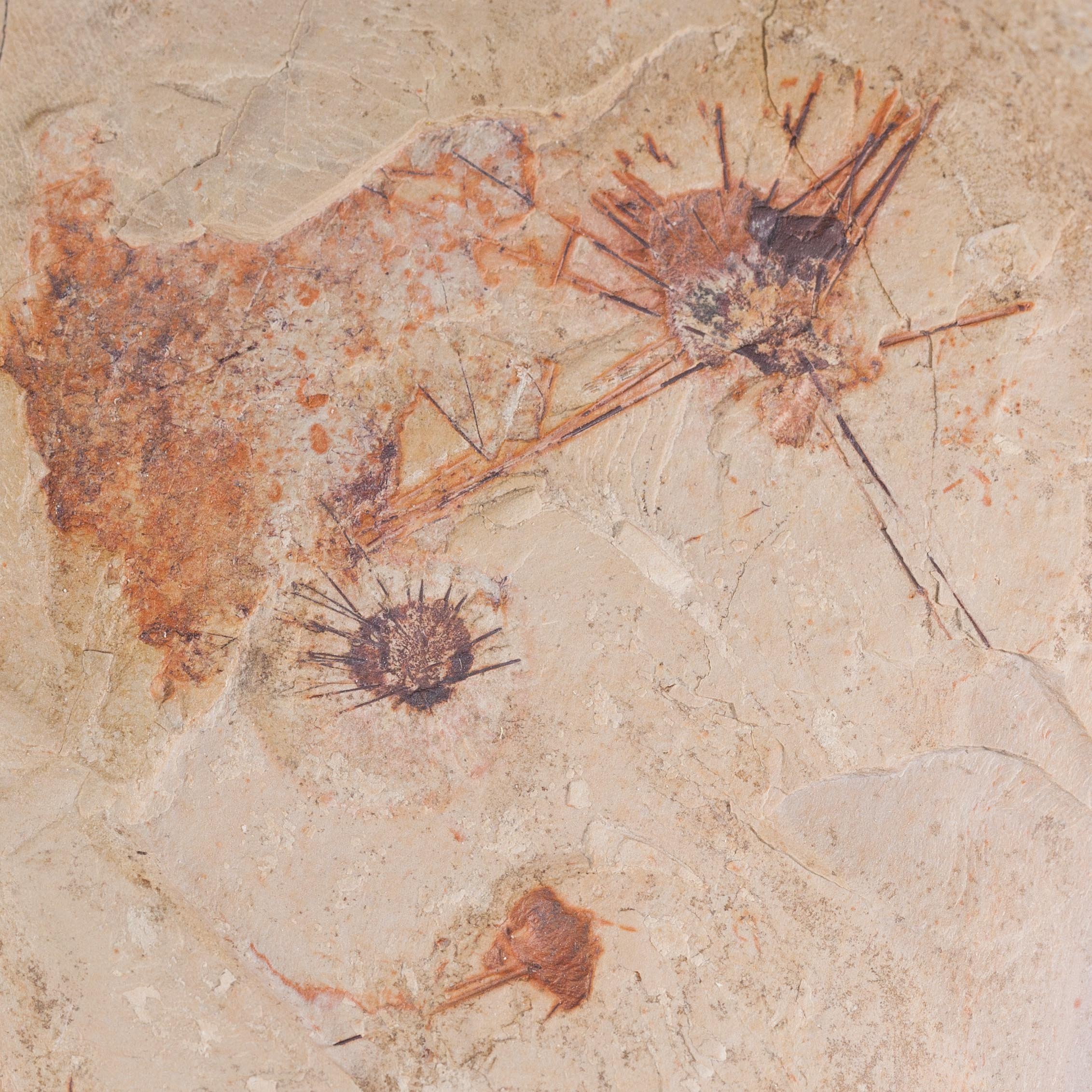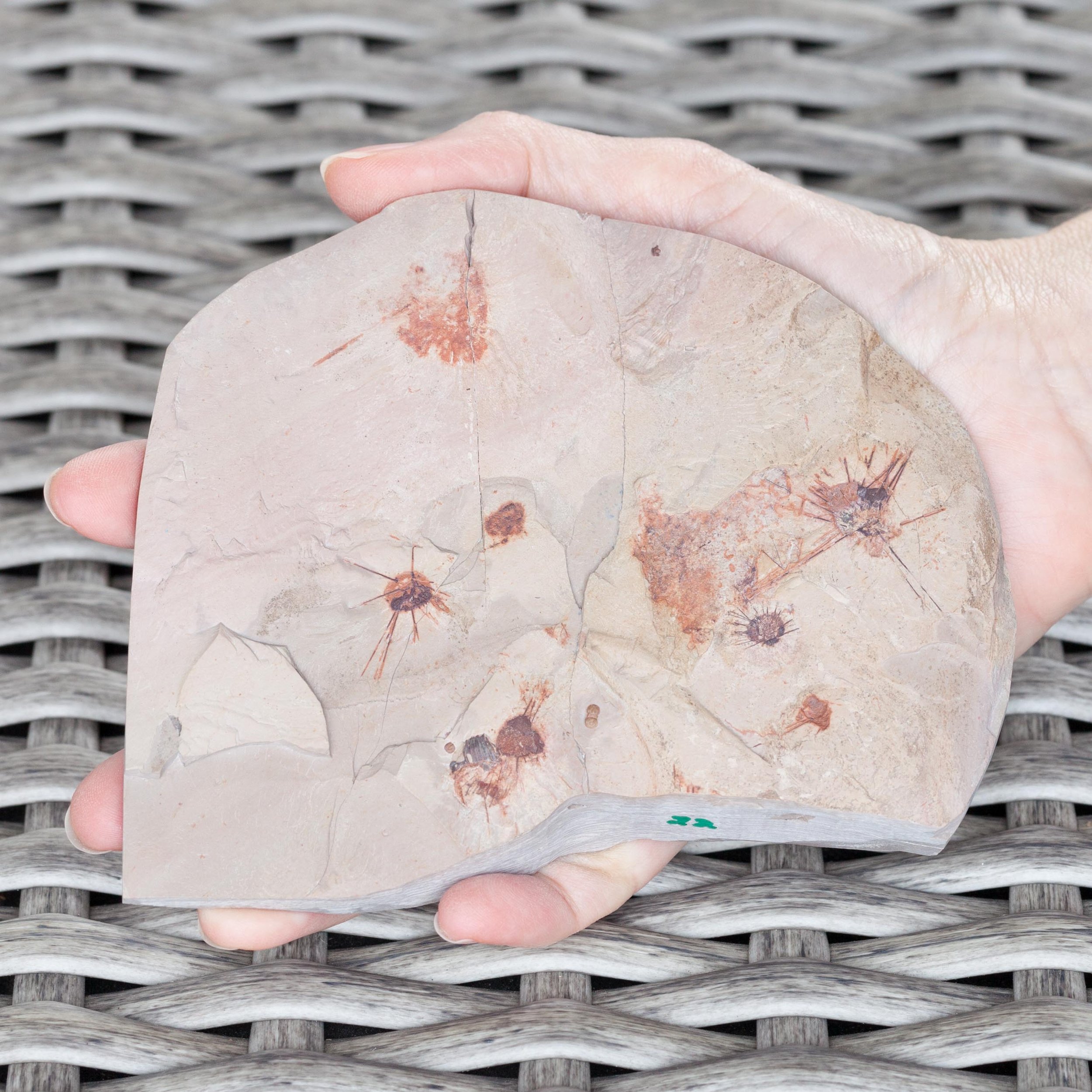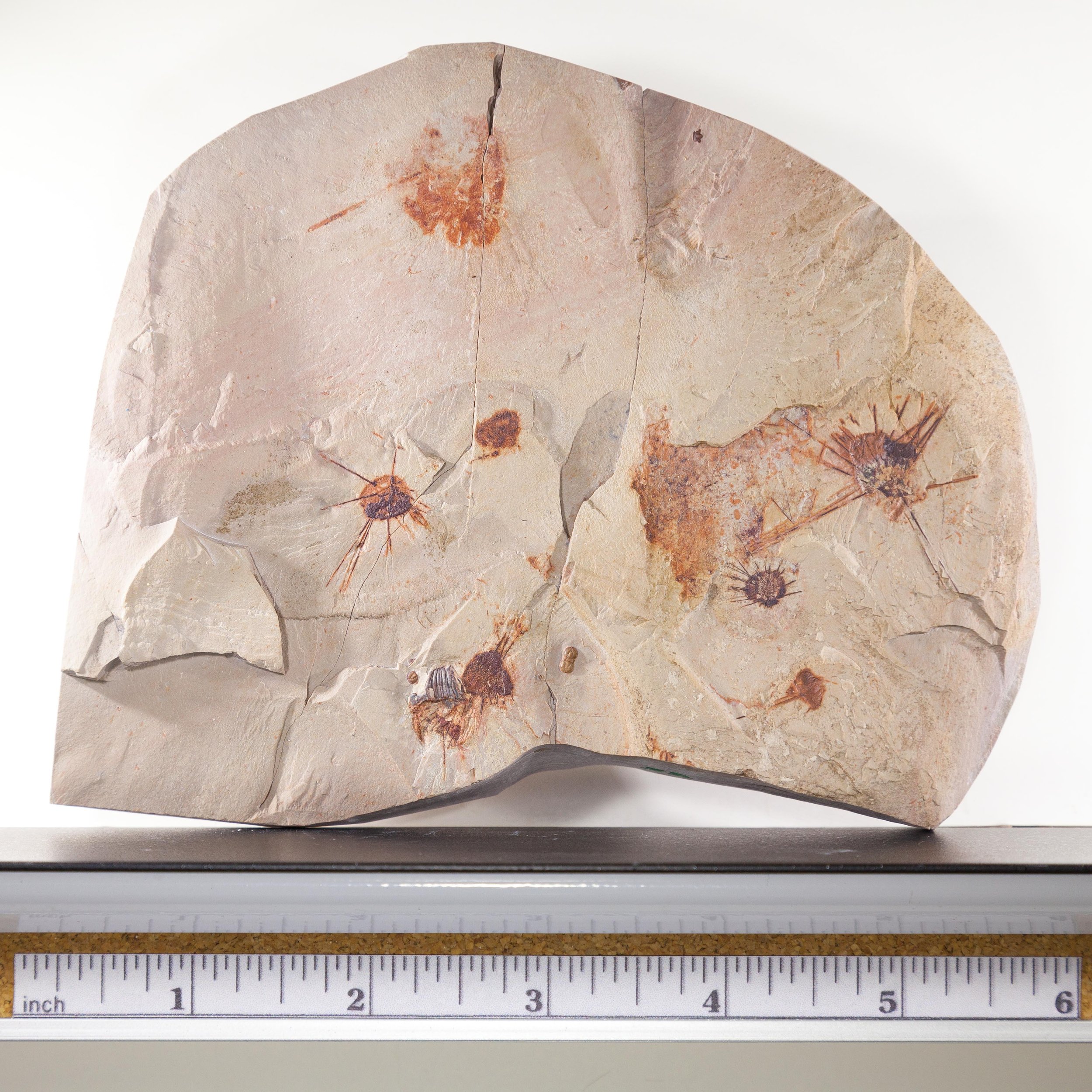 Image 1 of 3
Image 1 of 3

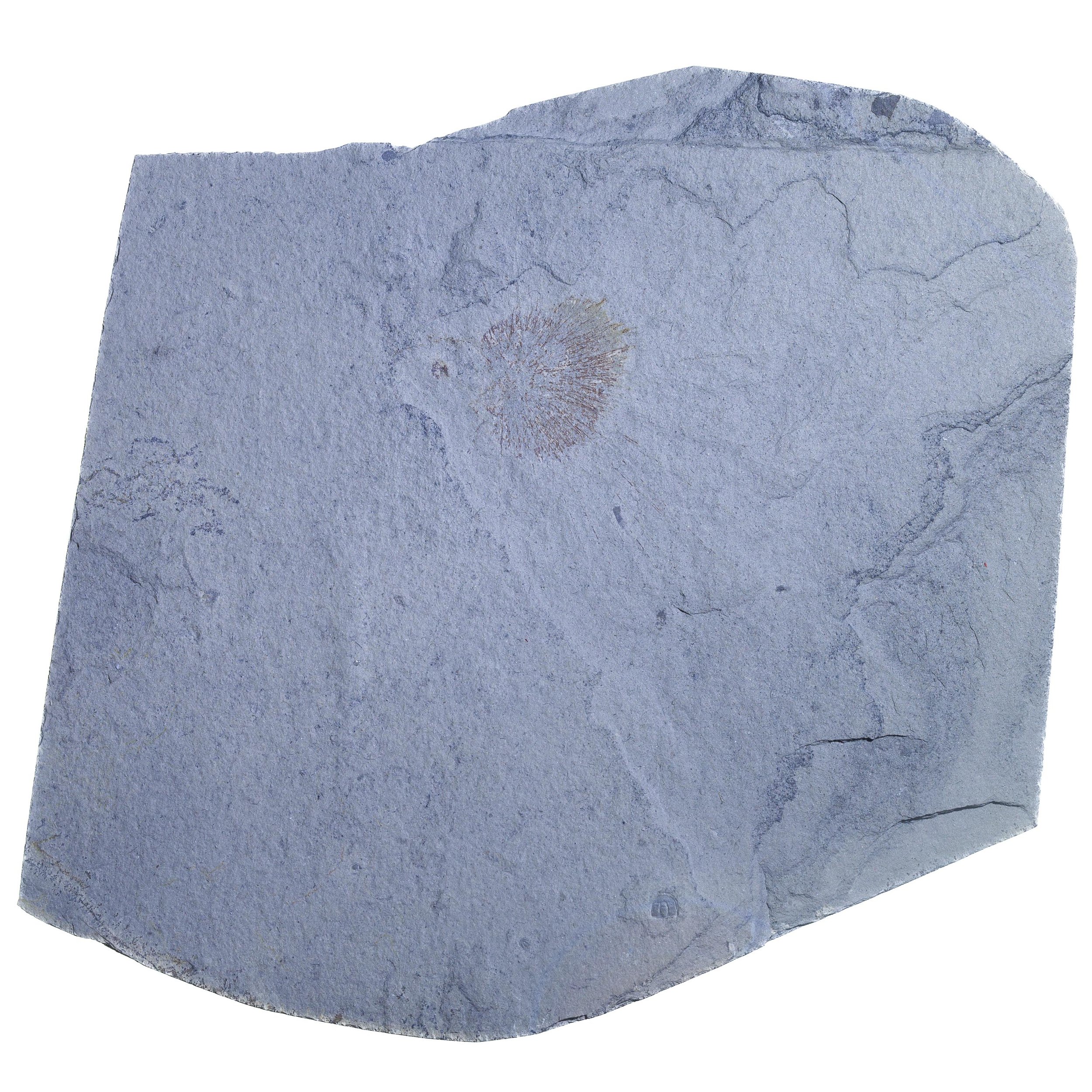 Image 2 of 3
Image 2 of 3

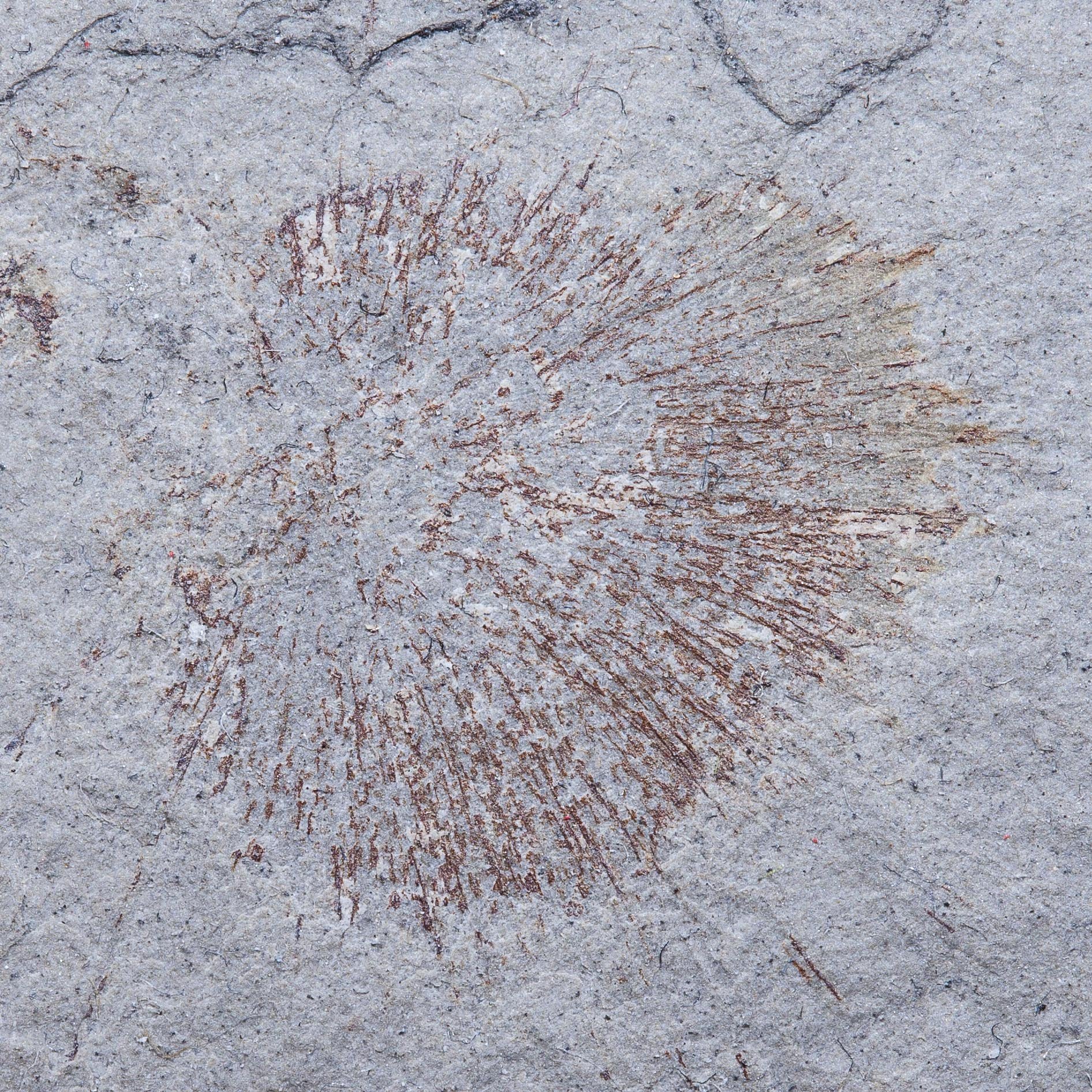 Image 3 of 3
Image 3 of 3




Choia carteri
Vendor: Gold Bugs
SKU Number: SQ4364473
Choia carteri, Middle Cambrian, Wheeler Shale Formation, Millard County, Utah.
The famous Burgess Shale fauna preserves organisms with low preservation potential. Luckily equivalent Middle Cambrian deposits are found in Utah as well. These rare Choia carteri sponges represent a rare assemblage of Burgess Shale-type fauna from the “Red Beds” of the Wheeler Shale, Utah. Choia are also very rare at the Burgess Shale Locality. These sponges feature a round, central area with radiating spines, allowing the sponge to sit on stilts above the sea floor and filter the water.
Sponge “skeletons” are made of spicules consisting of fibers of a protein similar to collagen, and sometimes silica. Where spicules of silica are present, they have a different shape from those in the otherwise similar glass sponges.
Demosponges (Demospongiae) are the most diverse class in the phylum Porifera.
Full dimensions are listed below (dimensions given include the extent of the spicules beyond the body).
Vendor: Gold Bugs
SKU Number: SQ4364473
Choia carteri, Middle Cambrian, Wheeler Shale Formation, Millard County, Utah.
The famous Burgess Shale fauna preserves organisms with low preservation potential. Luckily equivalent Middle Cambrian deposits are found in Utah as well. These rare Choia carteri sponges represent a rare assemblage of Burgess Shale-type fauna from the “Red Beds” of the Wheeler Shale, Utah. Choia are also very rare at the Burgess Shale Locality. These sponges feature a round, central area with radiating spines, allowing the sponge to sit on stilts above the sea floor and filter the water.
Sponge “skeletons” are made of spicules consisting of fibers of a protein similar to collagen, and sometimes silica. Where spicules of silica are present, they have a different shape from those in the otherwise similar glass sponges.
Demosponges (Demospongiae) are the most diverse class in the phylum Porifera.
Full dimensions are listed below (dimensions given include the extent of the spicules beyond the body).
Vendor: Gold Bugs
SKU Number: SQ4364473
Choia carteri, Middle Cambrian, Wheeler Shale Formation, Millard County, Utah.
The famous Burgess Shale fauna preserves organisms with low preservation potential. Luckily equivalent Middle Cambrian deposits are found in Utah as well. These rare Choia carteri sponges represent a rare assemblage of Burgess Shale-type fauna from the “Red Beds” of the Wheeler Shale, Utah. Choia are also very rare at the Burgess Shale Locality. These sponges feature a round, central area with radiating spines, allowing the sponge to sit on stilts above the sea floor and filter the water.
Sponge “skeletons” are made of spicules consisting of fibers of a protein similar to collagen, and sometimes silica. Where spicules of silica are present, they have a different shape from those in the otherwise similar glass sponges.
Demosponges (Demospongiae) are the most diverse class in the phylum Porifera.
Full dimensions are listed below (dimensions given include the extent of the spicules beyond the body).
Additional Information
The sponges of the extinct genus Choia, are members of Class Desmospongia, Family Choiidae. Choia is a rarer genus of sponge (Phylum Profera) with radiating spines that lived suspended high above the seafloor, attached via stalk-like spines derived from spicules. Their evolutionary range is from the Cambrian until the Lower Ordovician periods. Fossils of Choia have been found in the Burgess Shale in British Columbia; the Maotianshan shales of China; the Wheeler Shale in Utah; and the Lower Ordovician Fezouata formation. It was first described in 1920 by Charles Doolittle Walcott.
The Wheeler Shale formation was named by Charles Doolittle Walcott. The Wheeler is a Konzentrat-Lagerstätte of soft tissued organisms preserved as carbonaceous film on calcareous shale, shaley limestone, mudstone and thin flaggy limestone.
References:
